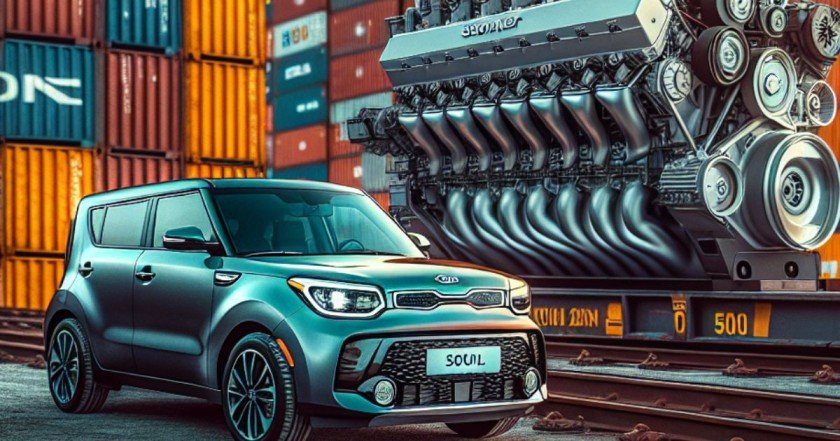The world is at a crossroads. Climate change, resource depletion, and environmental degradation are some of the most urgent challenges humanity faces today. With the global population rising and industrial activities continuing to exert pressure on the planet’s ecosystems, the need for a sustainable, green future has never been more apparent. The path toward a green future will require collective efforts from governments, businesses, communities, and individuals. This article explores the necessary steps we must take to build a sustainable green future, with a focus on innovation, policy reforms, and personal responsibility.
The Green Revolution: Why We Need Change
The concept of a “green future” revolves around the idea of sustainability—living within the ecological limits of our planet, ensuring that green future generations inherit a world that is capable of meeting their needs without compromising the ability of the Earth to support them. Current practices in energy consumption, waste generation, agriculture, and industrialization are driving global warming, deforestation, air pollution, and biodiversity loss.
Global warming, a direct consequence of the increasing concentration of greenhouse gases (GHGs) in the atmosphere, is causing average global temperatures to rise. This shift disrupts weather patterns, melts glaciers, increases sea levels, and makes extreme weather events more frequent and severe. The United Nations Intergovernmental Panel on Climate Change (IPCC) has warned that limiting global warming to 1.5°C above pre-industrial levels is necessary to avoid catastrophic consequences.
Additionally, deforestation and industrial farming are contributing to the rapid loss of biodiversity, which threatens ecosystems that provide essential services like clean water, pollination, and carbon sequestration. As a result, the need for a green future, one that focuses on sustainability, environmental protection, and climate resilience, has never been more urgent.
Innovation: The Key to a Sustainable Future

Innovation has the potential to solve many of the environmental challenges we face. Technological advancements in energy production, transportation, agriculture, and waste management are opening new pathways toward sustainability. Here are some promising innovations that can help accelerate the transition to a green future:
Renewable Energy: Powering the Future
The energy sector is the largest contributor to global carbon emissions, accounting for about 70% of the world’s greenhouse gas emissions. Fossil fuels such as coal, oil, and natural gas have been the backbone of industrial development for centuries, but their environmental toll is unsustainable. Transitioning to renewable energy sources such as solar, wind, and hydropower is one of the most effective ways to reduce carbon emissions and create a cleaner energy future.
Solar and wind energy have seen significant advancements in recent years, making them more efficient and cost-competitive with fossil fuels. As a result, the global transition to renewables is gaining momentum. According to the International Renewable Energy Agency (IRENA), renewable energy capacity has grown rapidly, and the cost of solar and wind power continues to decline, making them increasingly accessible to governments, businesses, and consumers.
For more informative article must visit: royallmagazine.com
Green Transportation: Reducing Emissions on the Road
Transportation is the second-largest source of carbon emissions worldwide. The rise of electric vehicles (EVs) represents one of the most promising solutions for reducing the environmental impact of travel. EVs produce zero tailpipe emissions and can be powered by renewable energy sources, which significantly reduces their carbon footprint compared to traditional internal combustion engine vehicles.
In addition to electric cars, innovations in public transportation—such as electric buses, high-speed trains, and shared mobility solutions—are transforming how people move in cities. Urban areas are also embracing infrastructure improvements, such as bicycle lanes and pedestrian-friendly designs, to reduce car dependency and promote green commuting options.
Circular Economy: Minimizing Waste and Maximizing Resources
The traditional “take-make-dispose” model of production is one of the major drivers of environmental degradation. Instead, a circular economy emphasizes reducing waste, reusing materials, and recycling products to extend their lifecycle. Innovations in recycling technology, material science, and product design are helping create a more sustainable way of consuming goods.
For example, advancements in biodegradable packaging materials, like plant-based plastics and edible wrappers, are reducing the reliance on petroleum-based plastics, which take centuries to decompose and are a major pollutant in landfills and oceans. Similarly, new techniques in industrial design and manufacturing, such as 3D printing, allow for the precise use of materials, reducing waste during production processes.
Policy: Building a Framework for Sustainability
While innovation is critical, policy interventions are necessary to create the regulatory frameworks that support and incentivize green technologies and practices. Governments play a pivotal role in fostering a green future through legislation, international agreements, and financial incentives. Several key policy areas need attention to ensure a sustainable transition:
Climate Policies and Global Cooperation
Global climate agreements, such as the Paris Agreement, represent a critical step toward coordinated international action on climate change. Under the Paris Agreement, nearly every country in the world has committed to reducing carbon emissions to limit global warming to well below 2°C, with efforts to limit it to 1.5°C. However, achieving these goals requires robust, ambitious policies that accelerate the shift toward renewable energy, energy efficiency, and sustainable land use.
Governments must also work together to share knowledge, resources, and technology to support developing nations in their efforts to mitigate climate change and adapt to its impacts. This includes providing financial assistance for green projects, such as clean energy infrastructure, reforestation, and climate-resilient agriculture.
Carbon Pricing: Putting a Price on Pollution
One of the most effective policy tools for driving emission reductions is carbon pricing. By putting a price on carbon emissions, either through a carbon tax or cap-and-trade systems, governments can incentivize businesses and individuals to reduce their carbon footprint. Carbon pricing sends a clear market signal that polluting activities will be penalized, while cleaner alternatives become more economically attractive.
Several countries and regions have already implemented carbon pricing mechanisms, including the European Union, Canada, and China. These systems have led to significant emission reductions in participating countries and demonstrate the power of economic incentives in combating climate change.
Sustainable Agriculture: Protecting the Land
Agriculture is a major contributor to greenhouse gas emissions, deforestation, and water pollution. Policy reforms are needed to promote sustainable agricultural practices that conserve natural resources, enhance soil health, and reduce the carbon footprint of food production.
Governments can support sustainable agriculture by providing subsidies for organic farming, promoting agroecological practices, and incentivizing the adoption of climate-smart technologies, such as precision farming and vertical farming. Additionally, policies that encourage sustainable land management and forest conservation can help protect biodiversity and prevent further environmental degradation.
Must Read: Lacey Maurer NC: A Nature Lover’s Perfect Getaway
Personal Action: Small Steps, Big Impact
While large-scale innovations and policies are crucial, individual actions also play an important role in driving sustainability. As consumers, we have the power to make choices that support environmentally friendly products and services. Here are some ways individuals can contribute to a green future:
Reducing Energy Consumption
One of the most effective ways to reduce your carbon footprint is by reducing energy consumption. This can be achieved by adopting energy-efficient appliances, using smart thermostats to regulate heating and cooling, and reducing overall energy use through habits like turning off lights when not in use and unplugging devices.
Switching to renewable energy sources for your home—such as installing solar panels or purchasing green energy from your utility—can also significantly reduce your environmental impact.
Sustainable Transportation Choices
Opting for sustainable transportation options, such as walking, biking, or using public transit, can reduce your carbon footprint. If driving is necessary, consider switching to an electric or hybrid vehicle to reduce emissions. Carpooling and shared mobility services, like ride-sharing apps, are other ways to reduce the number of vehicles on the road and lower overall emissions.
Embracing a Sustainable Diet
Food production, particularly livestock farming, is a major contributor to greenhouse gas emissions and environmental degradation. By reducing meat consumption, particularly beef and lamb, and opting for plant-based diets, individuals can reduce their carbon footprint. Supporting local, organic, and sustainably farmed food also contributes to a healthier environment.
Reducing Waste
Becoming more conscious of waste is an essential part of living sustainably. Simple actions such as recycling, composting, and choosing products with minimal packaging can make a big difference. Additionally, reducing consumption by buying fewer but higher-quality goods and reusing or repurposing items can help minimize waste.
Conclusion:
The Road Ahead
The path toward a green future is not simple, but it is achievable. By embracing innovation, supporting effective policies, and making sustainable choices in our daily lives, we can create a future that is not only environmentally sound but also economically viable and socially just. The transition to a green future will require collective action, but the rewards—a healthier planet, a more resilient society, and a thriving economy—are worth the effort.
While the challenges ahead are daunting, there is hope. Across the globe, individuals, businesses, and governments are already taking steps to build a more sustainable world. It is up to each of us to contribute, in whatever way we can, to the movement toward a green future—one that is cleaner, fairer, and more sustainable for all.



